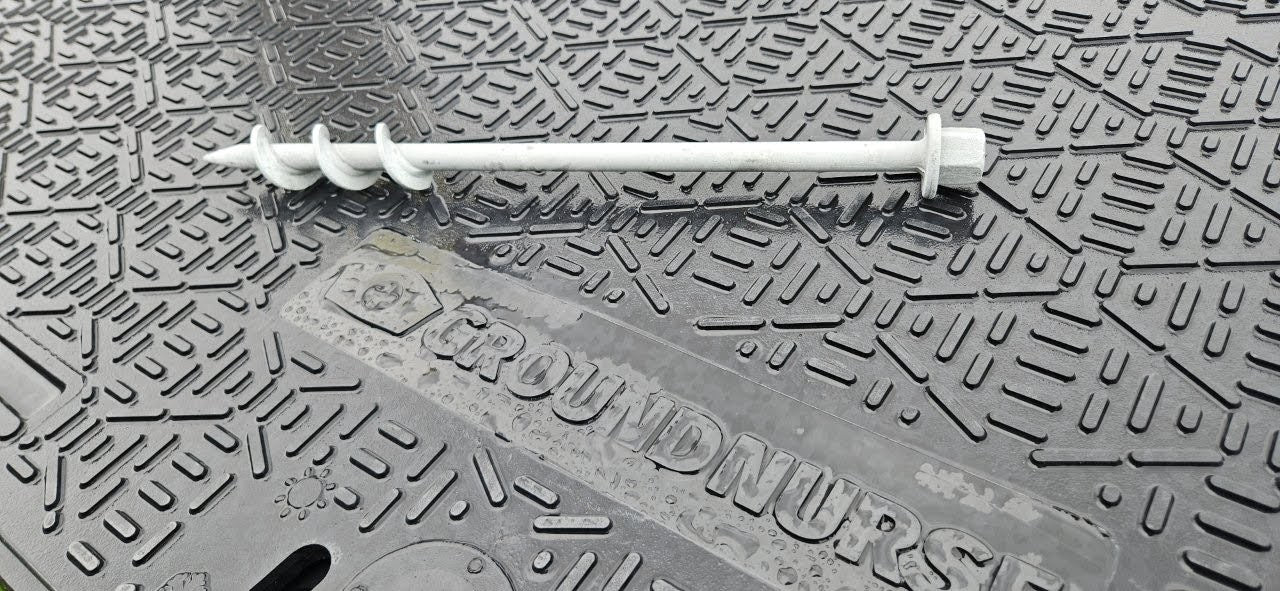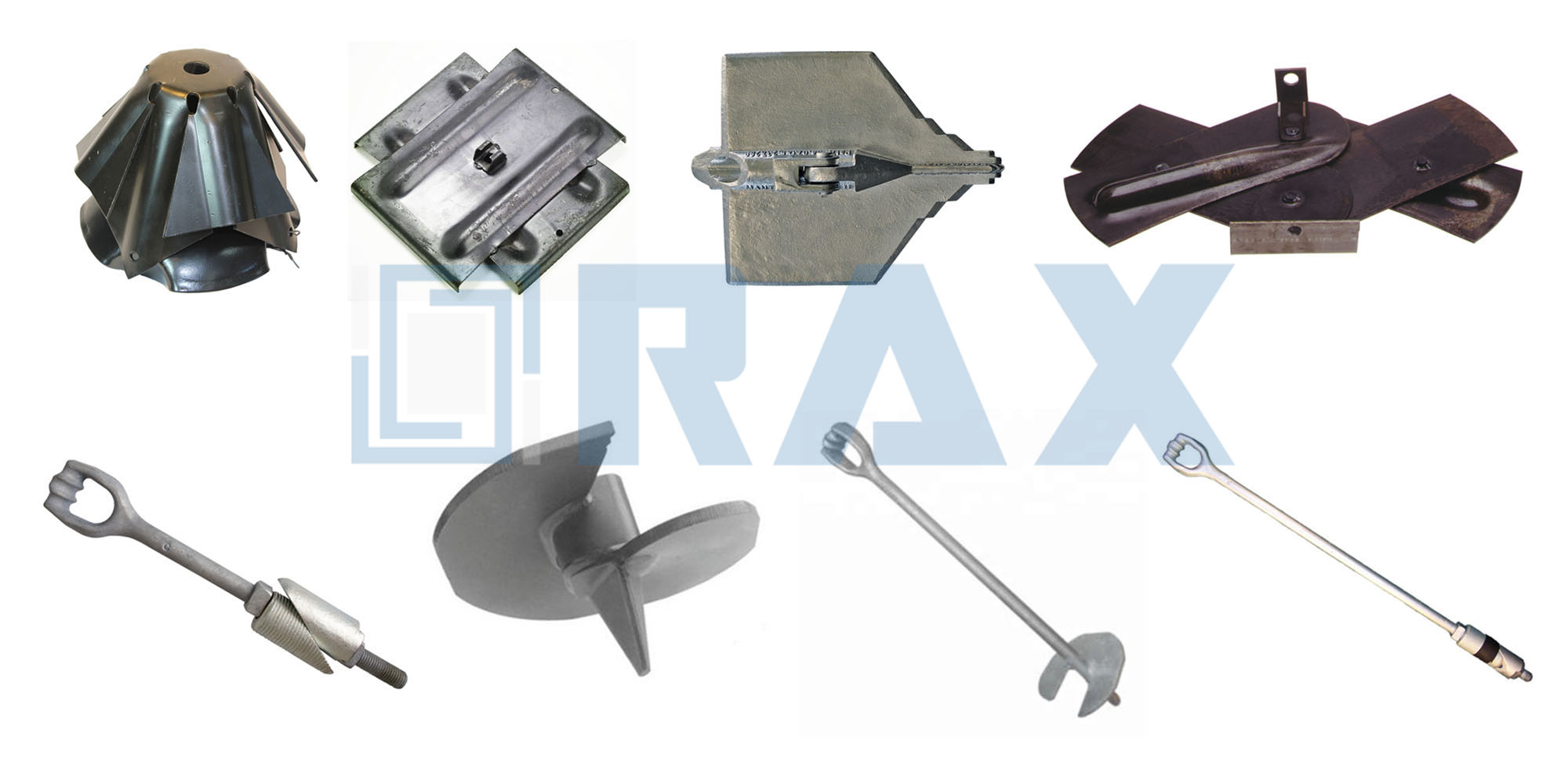Just How Sturdy Earth Anchors Work: A Comprehensive Guide to Soil Anchoring Solutions
Heavy-duty Earth anchors play an important role in giving stability and assistance in different construction applications. By installing deeply right into the ground, they resist vertical and side pressures properly. Various types of supports accommodate numerous dirt problems, making them flexible. Understanding their mechanics and installation methods is important for taking full advantage of performance. What aspects influence their effectiveness, and exactly how do they contrast to typical techniques? The responses may shock you.
Understanding Sturdy Earth Anchors
Heavy-duty Earth anchors act as necessary parts in numerous building and landscape design tasks, providing security and support in difficult dirt problems. These anchors function by being embedded into the ground, where they resist side and upright pressures. Their design allows for secure attachment to structures, guaranteeing they remain secured versus dirt activity or exterior loads.The performance of sturdy Earth supports largely depends upon the sort of soil and the anchor's installation depth. Appropriate setup methods are important, as they determine the support's holding capacity. Environmental elements, such as moisture and freeze-thaw cycles, can also influence performance.These supports are regularly used in applications ranging from securing fences and retaining wall surfaces to supporting momentary structures throughout unfavorable weather condition conditions. Recognizing the concepts behind sturdy Earth supports is essential for professionals looking for to improve the toughness and safety and security of their tasks.
Kinds of Heavy-Duty Earth Anchors
Different sorts of heavy-duty Earth anchors are developed to satisfy certain demands based on dirt conditions and task demands. Helical anchors, including screw-like blades, work in softer soils, using high load abilities and very easy installment. Driven anchors, which are hammered right into the ground, appropriate for rough surfaces and give instant load assistance. Tie-back anchors are typically used in preserving wall surface applications, permitting side support by anchoring into the ground at an angle. One more type is the cast-in-place support, perfect for concrete applications, as they are integrated right into structures for boosted security. Dirt screw anchors are functional options that can be utilized in numerous soil kinds, offering reliable stress and compression abilities. Each kind serves unique applications, guaranteeing stability and safety and security in construction and landscaping projects. Understanding these choices permits informed decisions in picking the appropriate Earth anchoring service.
The Mechanics of Soil Anchoring

Comprehending the mechanics of soil anchoring needs an exam of various sorts of Earth supports and their setup strategies. Each anchor kind presents unique characteristics that affect its performance in different dirt conditions. Correct installation methods are vital for taking full advantage of the anchoring system's stability and performance.
Types of Earth Anchors
Earth supports, necessary parts in dirt anchoring systems, come in several types, each designed for particular applications and soil conditions. The most usual kinds include screw supports, which are turned right into the ground, giving solid lateral resistance. Helical anchors include blades that permit reliable installment in numerous dirt kinds, making them ideal for both long-term and short-term applications. Driven anchors, generally made from steel, are hammered right into the dirt and work in rocky or thick settings. Auger anchors make use of a helical design to assist in installment in softer dirts. Plate anchors consist of a level plate hidden flat, distributing load over a bigger area, suitable for applications requiring high tons capacities in natural soils.
Installment Techniques Explained
Proper installment techniques are vital for the efficiency of dirt anchoring systems. The process usually starts with site analysis, verifying the picked place can sustain the support's lots. After figuring out the proper anchor kind, proper opening deepness and angle need to be established. The setup entails driving the anchor into the ground making use of customized equipment, such as hydraulic or hands-on drivers, to achieve ideal embedment. Post-installation, tensioning the support is crucial to guarantee stability; this is frequently validated with load testing. In addition, surrounding dirt conditions must be kept track of to avoid displacement. Complying with these strategies not only boosts the support's efficiency yet likewise lengthens its lifespan, supplying trusted support for various applications.
Applications of Heavy-Duty Earth Anchors
While sturdy Earth supports are usually connected with construction and landscaping, their flexibility includes a selection of applications throughout various sectors. In civil design, they provide important support for keeping walls, making sure security in locations susceptible to soil disintegration. The aquatic field makes use of these supports for securing anchors and marinas, preventing activity brought on by currents and tides. Additionally, in the telecom sector, sturdy Earth supports are significant for stabilizing cell towers and various other high structures versus wind forces. Agricultural applications likewise benefit, as these supports can protect structures like greenhouses and livestock fencing, guaranteeing they stand up to severe weather. In sustainable energy tasks, such as wind farms, Earth anchors play a vital function in protecting wind turbine foundations, enhancing total security and efficiency. This wide variety of applications highlights the flexibility and dependability of heavy-duty Earth anchors throughout various areas.
Advantages Over Standard Anchoring Techniques
Traditional anchoring methods have long been counted upon for stability, sturdy Earth supports use significant advantages that improve performance and performance. One major advantage is their premium load-bearing capacity, which enables them to withstand higher pressures without failure. This strength makes them suitable for demanding applications, such as in building and energy installations.Additionally, heavy-duty Earth anchors are made for deeper setup, giving higher stability in different dirt conditions, consisting of loose or sandy soils. Their resistance to deterioration and ecological elements assures a much longer life-span and lowered maintenance prices contrasted to standard methods.Moreover, these anchors can be installed with very little disruption to the surrounding location, protecting the integrity of the landscape. Generally, sturdy Earth anchors present a effective and reputable option for securing requirements, going beyond the constraints commonly linked with typical anchoring strategies.
Installment Refine and Best Practices
The installation procedure for soil securing options begins with thorough prep work and website analysis to ensure peak performance. Following this, a detailed installation overview gives clear guidelines for reliable application (soil anchoring solutions). Complying with these ideal techniques is essential for accomplishing durable and dependable anchoring outcomes
Preparation and Website Evaluation
Effective prep work and detailed website examination are crucial steps in the setup of soil anchoring remedies. Before installation, the dirt type have to be assessed to determine its bearing ability and viability for securing. Carrying out a geotechnical study can give crucial information concerning dirt make-up, dampness levels, and prospective ground movement. Additionally, recognizing existing frameworks, plants, and utilities is necessary to prevent interference throughout setup. website here The location needs to be removed of particles and challenges to assure risk-free gain access to for devices. Weather ought to likewise be kept track of, as negative conditions can affect both safety and installment efficiency. By thoroughly preparing the site and evaluating all relevant factors, the likelihood of effective anchor performance is considerably enhanced.
Step-by-Step Installation Overview
A complete installment process is crucial for attaining perfect performance of soil anchoring remedies. The installment starts with choosing the suitable anchor kind and guaranteeing the website is free from debris. Next off, proper opening placement is identified based upon lots needs. Once the area is established, openings are drilled to the specified depth and diameter using the right devices. The support is then put right into the hole, making sure it is straightened correctly. After securing the anchor, dirt is backfilled and compressed to improve security. It is important to follow manufacturer guidelines throughout the procedure. A post-installation examination validates that the anchors are adequately located and working as intended, offering dependable assistance for the intended application.

Upkeep and Assessment of Earth Anchors
Routine maintenance and his comment is here evaluation of Earth anchors are crucial for ensuring long-term efficiency and stability. Routine checks enable the very early detection of concerns such as corrosion, loosening, or soil motion. Assessors must try to find indications of rust or destruction on the anchor parts, particularly at the connection points. Furthermore, the bordering dirt needs to be examined for disintegration or modifications in wetness web content, which can influence support effectiveness.It is advisable to establish a regular evaluation routine, preferably a minimum of annually, relying on environmental conditions. Throughout inspections, all visible parts must be cleaned up to remove dirt or debris that can conceal prospective problems. Any type of indicators of distress, such as tilting structures or unusual settling, ought to trigger immediate evaluation. Proper documents of examinations can help in tracking support efficiency gradually and help with prompt maintenance actions, ensuring the anchors stay functional and reliable.
Regularly Asked Inquiries
What Products Are Heavy-Duty Earth Anchors Usually Made From?
Heavy-duty Earth anchors are normally constructed from resilient materials such as galvanized steel or stainless-steel, making sure strength and resistance to corrosion. These products give resilient assistance and stability in numerous dirt problems and applications.
Just How Do Dirt Problems Impact Support Efficiency?
Soil problems substantially influence anchor efficiency. Factors such as dirt type, wetness material, and compaction affect the anchor's hold and security, with cohesive soils typically giving better resistance than loose or sandy soils, affecting total effectiveness.
Can Heavy-Duty Earth Anchors Be Recycled After Removal?
Sturdy Earth supports can be recycled after elimination, supplied they are evaluated for damage and wear. Appropriate cleansing and maintenance improve their long life, making sure efficient efficiency in succeeding installations when problems enable safe reinstallation.
What Are the Environmental Impacts of Utilizing Earth Anchors?
The ecological impacts of making use of Earth anchors consist of possible dirt disruption, interruption of neighborhood environments, try this website and feasible contamination of groundwater. Nevertheless, if made use of properly, their benefits frequently surpass these concerns, promoting stability in numerous applications.
How Do I Choose the Right Support for My Project?

Comments on “Why Site Engineer Needs construction site anchors for Safety and Durability”